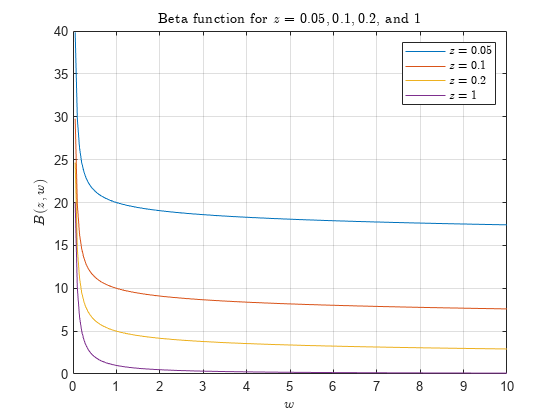beta
Beta function
Syntax
Description
B = beta(Z,W)Z and W. Both
Z and W must be real and nonnegative.
Examples
Input Arguments
More About
References
[1] Olver, F. W. J., A. B. Olde Daalhuis, D. W. Lozier, B. I. Schneider, R. F. Boisvert, C. W. Clark, B. R. Miller, and B. V. Saunders, eds., Chapter 5.12 Beta Function, NIST Digital Library of Mathematical Functions, Release 1.0.22, Mar. 15, 2018.
Extended Capabilities
Version History
Introduced before R2006a
